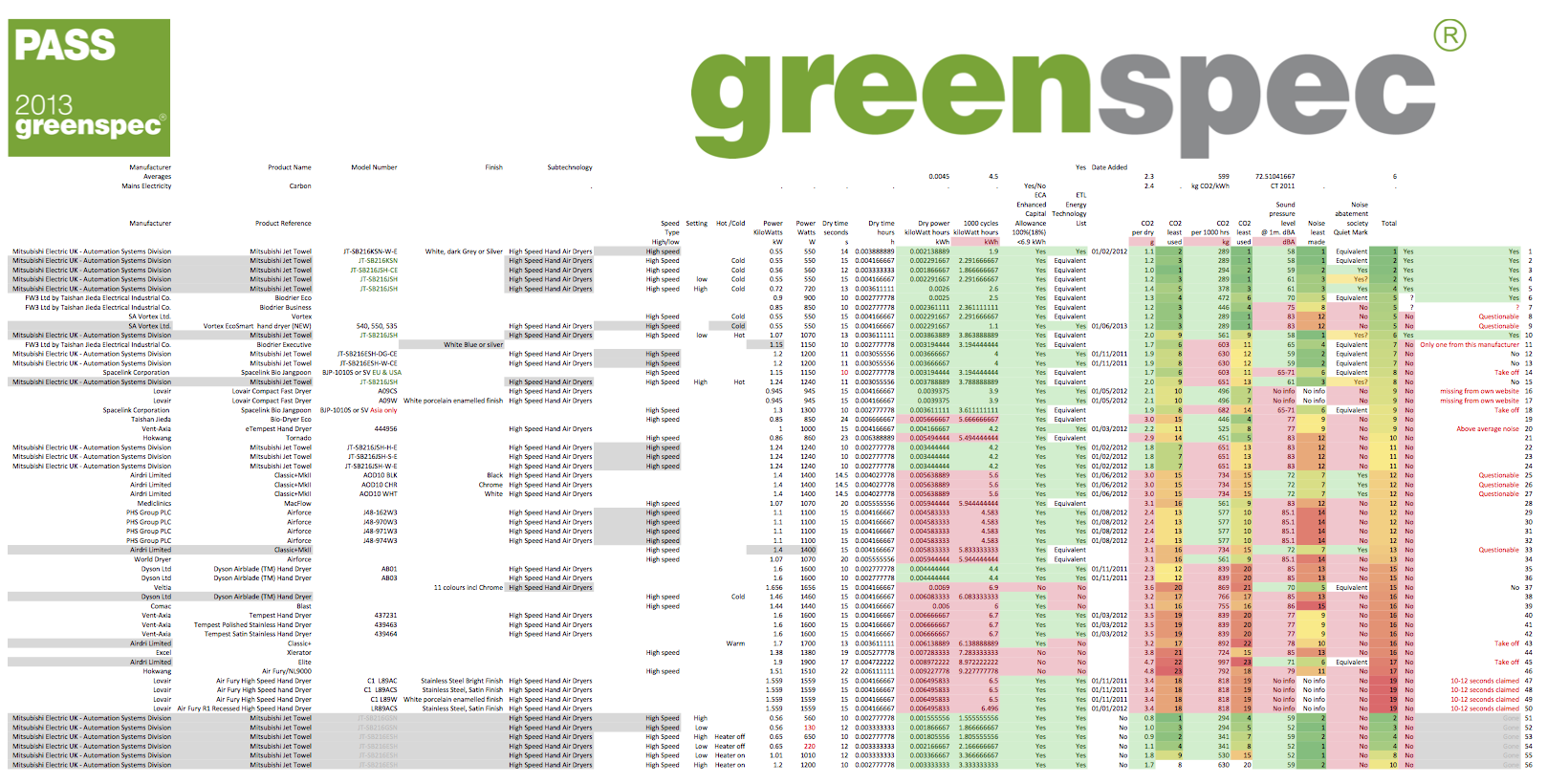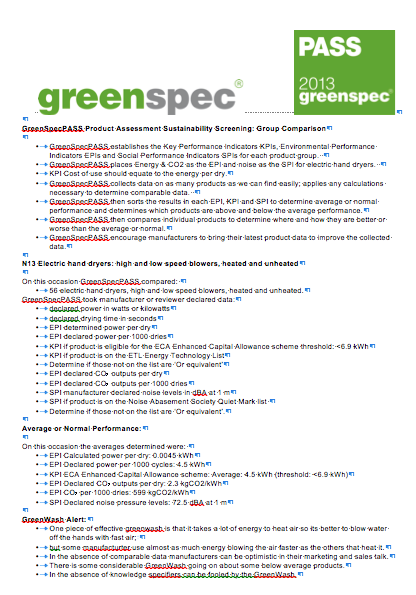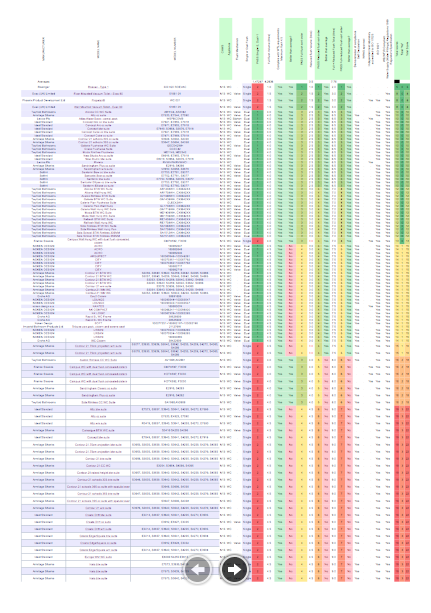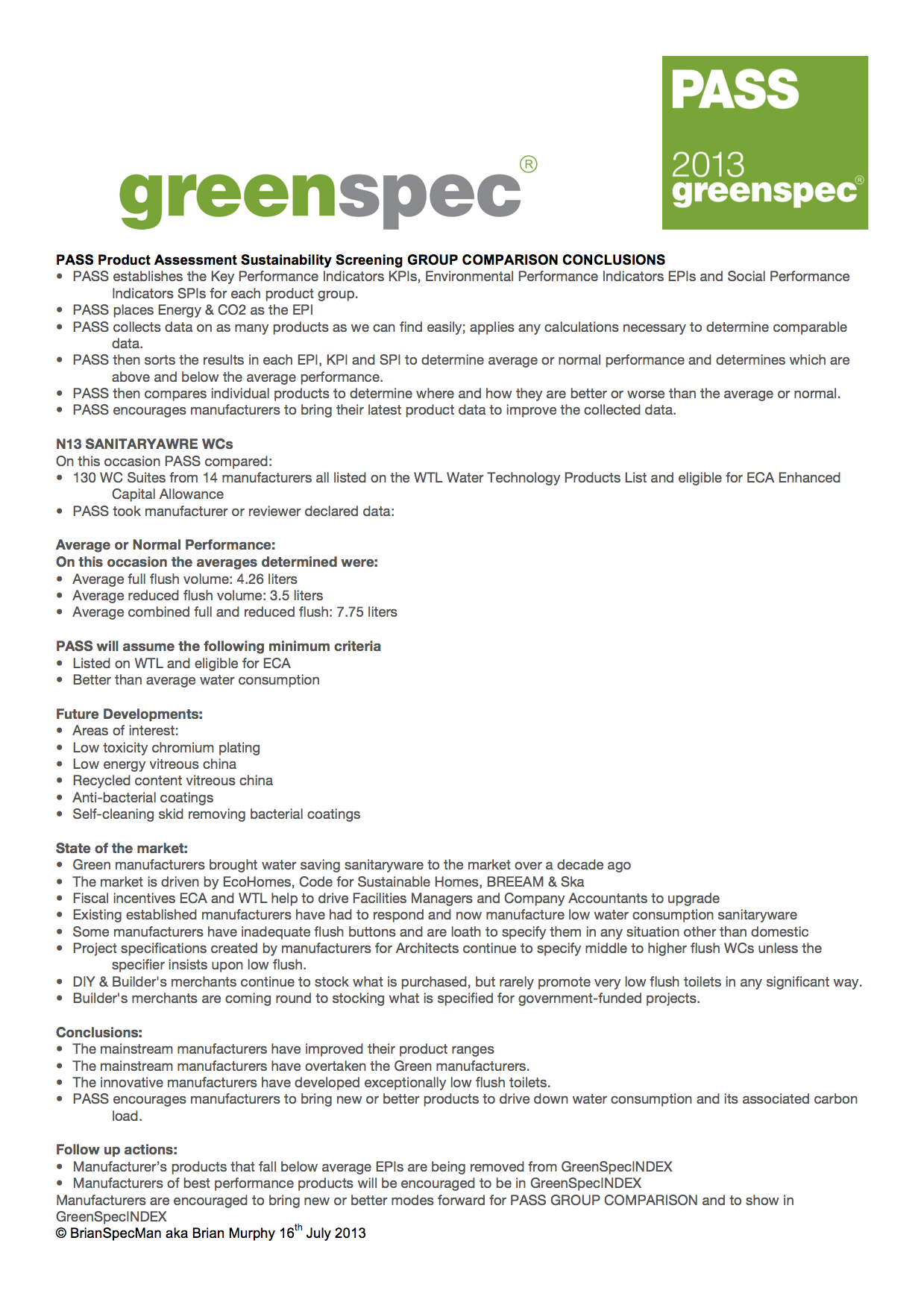N13 Sanitaryware Appliances:
About:
Consider:
- A good high flow gravity fed shower to discourage retrofitting of power shower
- Making all disabled toilets unisex to provide more toilets for females
- Making baby change unisex and not occupying a toilet, to provide more toilets for females
- Taps offer opportunities for reducing water demand
- Proximity detection taps will only operate when hands are present
- Because there are no taps to turn on, soap residues on taps they do not need cleaning so frequently or extensively
- Aerated taps use considerably less water whilst not appearing to do so
- Water reducing valves should be fitted to all appliances to reduce high mains pressure to an appropriate flow, so when a tap is open full bore the water is sufficient to rinse hands rather than fill a bath
- Two stage taps can offer low flow in first position and high flow in second position
- Water reducing/isolating valves can be fitted to all appliances to reduce waste when systems would otherwise need to be drained for maintenance
URINALS:
- The decision not to use urinals will increase the demand on water from toilet flushes
- Urinals create a high demand for water, all of which is drinking quality
- Waterless urinals require no water at all and only use an oil cartridge to seal sewer gas from the room
- Conventional water urinals can be proximity detection to flush only after a person has been present and has left
TOILETS:
- Toilets create a high demand for water, all of which is drinking quality
- Low or dual flush toilets use less water than their conventional alternatives, flushes can be reduced from 9 litre to 6, 4, 2 and even 1 litre flushes with syphonic drainage.
- Assuming some visitors use the toilets less than once and others might use them more than once assume an average of 1,000,000 uses x 5 litres reduction (9 down to 4) = 5000 m3 of drinking quality water saved per year from toilet flushes alone
EAM Environmental Assessment Methods:
- AECB have a water standard that is practical and realistic
- AECB water standard as an alternative to BRE’s Code for Sustainable Homes and EcoHomes or BREEAM
PASS:
- Product Assessment Sustainability Screening
Avoid:
- Overnight water flushing on an automatic urinal flushing system must be avoided
- Taps that can be left running
- Taps running at full bore full pressure, if nor required
- Water hammer noise from pipes
- Noise from push taps closing on high pressure pipes
- Taps that require pressure boosting pumps
- Power showers
- Inadequate showers that people would retrofit with a power shower
© NGS GBE BrianSpecMan aka Brian Murphy
2001 – 13th July 2013 – 22nd February 2015 |
N13 Sanitaryware Appliances
Images:

Fig. 1 NGS COMPARE
N13 Sanitary Applicances: Electric Hand Driers

Fig. 2 NGS COMPARE CONCLUSIONS
N13 Sanitary Applicances: Electric Hand Driers

Fig. 3 NGS COMPARE
N13 Sanitary Applicances: WCs

Fig. 4 NGS COMPARE CONCLUSIONS
N13 Sanitary Applicances: WCs
© NGS GBE BrianSpecMan aka Brian Murphy
28th May 2013 – 22nd February 2015 |
N13 Sanitaryware Appliances
See Also:
- N13 Sanitaryware Appliances
- N13 Sanitaryware: WCs
- N13 Hand Driers
© NGS GBE BrianSpecMan aka Brian Murphy
7th May 2013 – 22nd February 2015 |